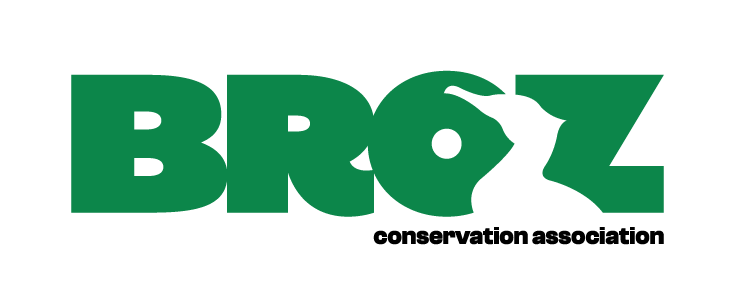„Grazing is amazing“
Project LIFE SUB-PANNONIC focuses on restoration of rare dry grassland ecosystems which are currently threatened by succession and invasive plant species due to the abandonement of traditional grazing and management of these localitites. The restoration of the rare habitats is done with the help of four-legged mowers – sustainable management through grazing animals by local farmars. On the 22 localities across Slovakia, from the Small Carpathians all to way to Zemplín on the east and on 7 localities in Moravia the project improves the status of rare habitats and the protection status of population of floral species of European Importance: Himantoglossum caprinum, Onosma tornensis and Artemisia pancicii.
The project partners are the State Nature Conservancy of the Slovak Republic and for localities in Moravia ČSOPK – ONYX.
We thank the administration of NP Slovenský Kras, CHKO Latorica, CHKO Cerova vrchovina, CHKO Ponitrie, CHKO Biele Karpaty, CHKO Malé Karpaty, CHKO Dunajské luhy, AOPK – CHKO Pálava and local farmers for their help with the implementation of the project.
- News
- Basic info
- Target species
- Project area
- Activities
- Achieved results
- People
- Krajiná živá
- Online educational trails
- Download

The restored grasslands flourished – however, our herds won’t enjoy the rare species!
After years of targeted work on pasture restoration in areas of European significance, we have faced many smaller and larger challenges. Overcoming them was often not easy. However, our motivation has always been and remains the springtime.

Active weekend at SCI Veľký Kopec.
In collaboration with farmer Arnold Dócs, local enthusiasts, and tremendous support from OZ SAVE NATURE, we helped remove this picturesque pasture from Invasive alien plant species, as well as shrubs and dense woody vegetation.

We shared experiences with the management of valuable biotopes in Hortobágy National Park
The autumn days from October 11th to 13th were marked by an active exchange of experiences in the management of valuable biotopes, where grazing is well combined with nature conservation. Together with stakeholders from Life-Subpannonic and Life-South, we embarked on a field trip to Hortobágy National Park.

We have drawn inspiration for the development of sustainable tourism!
Each of the locations included in the Subpannonic project can boast of natural beauty that has the potential to attract many tourists. However, these are often areas that are not very well-known among tourists. How to kickstart tourism in such regions?
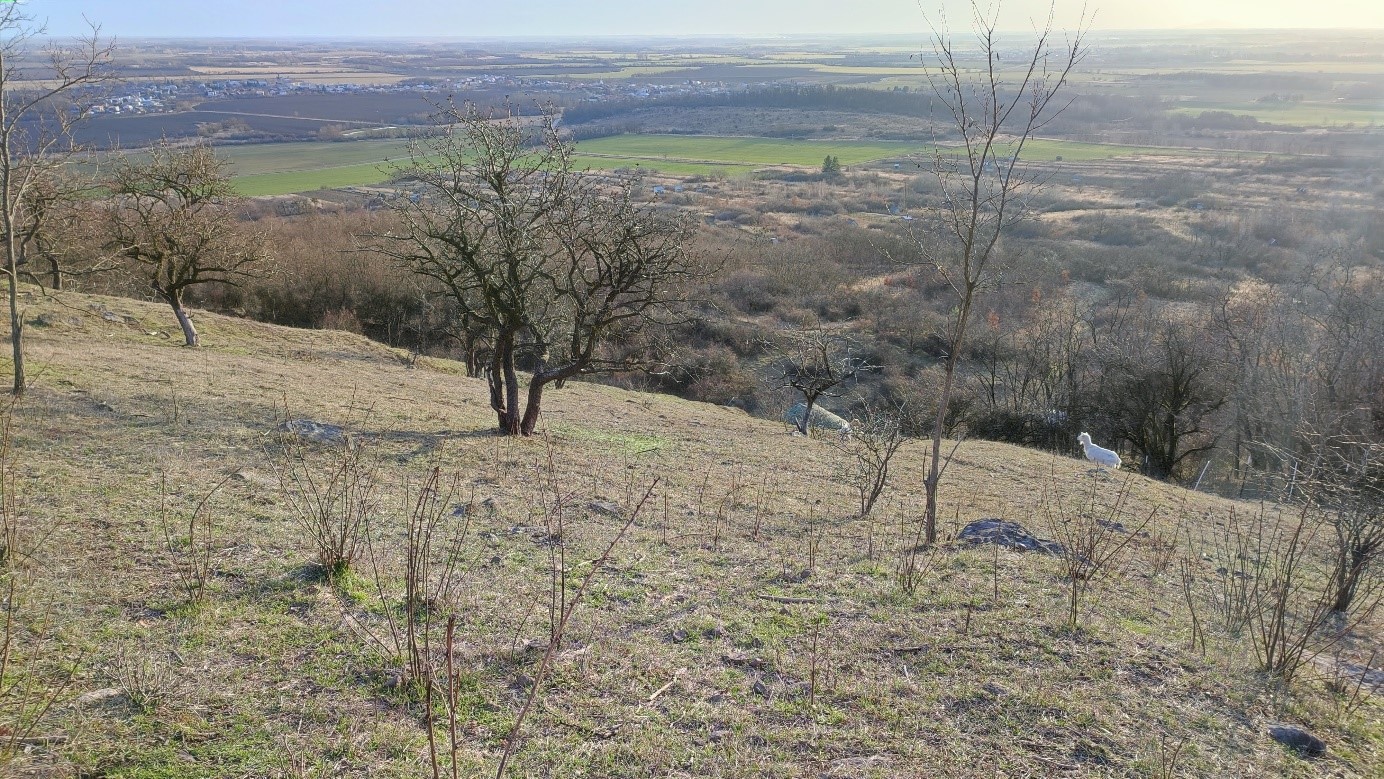
The volunteer’s actions are continued on Veľký Kopec
In the middle of February, the volunteers had met to help again the pasture species in Site of Community Importance Veľký Kopec. The locality is known by the occurrence of steppe and forest-steppe habitats.
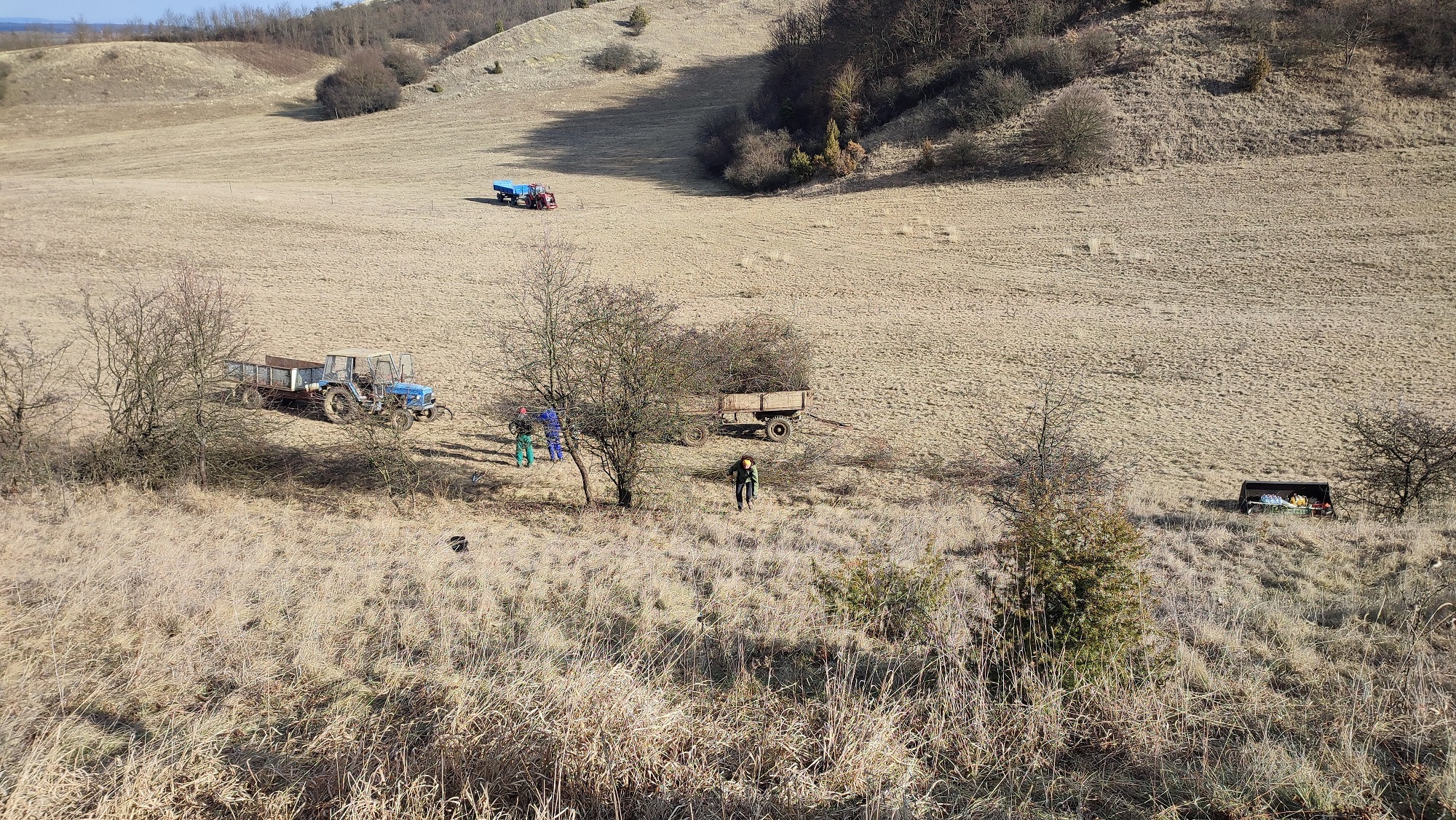
We were working hard on Pieskovcové chrbty
We are trying to restore grazing to the Pieskovcové chrbty locality, which will be crucial for the protection of rare species. So far, we are at least cleaning and removing air raids.

Volunteer’s actions ,,Nippers“
Volunteers from OZ Permoníci – the geocachers as well as other volunteers visited the locality Pánsky Diel for the 20th time! By their willingness they helped to develop the protection of targetted species and habitats.
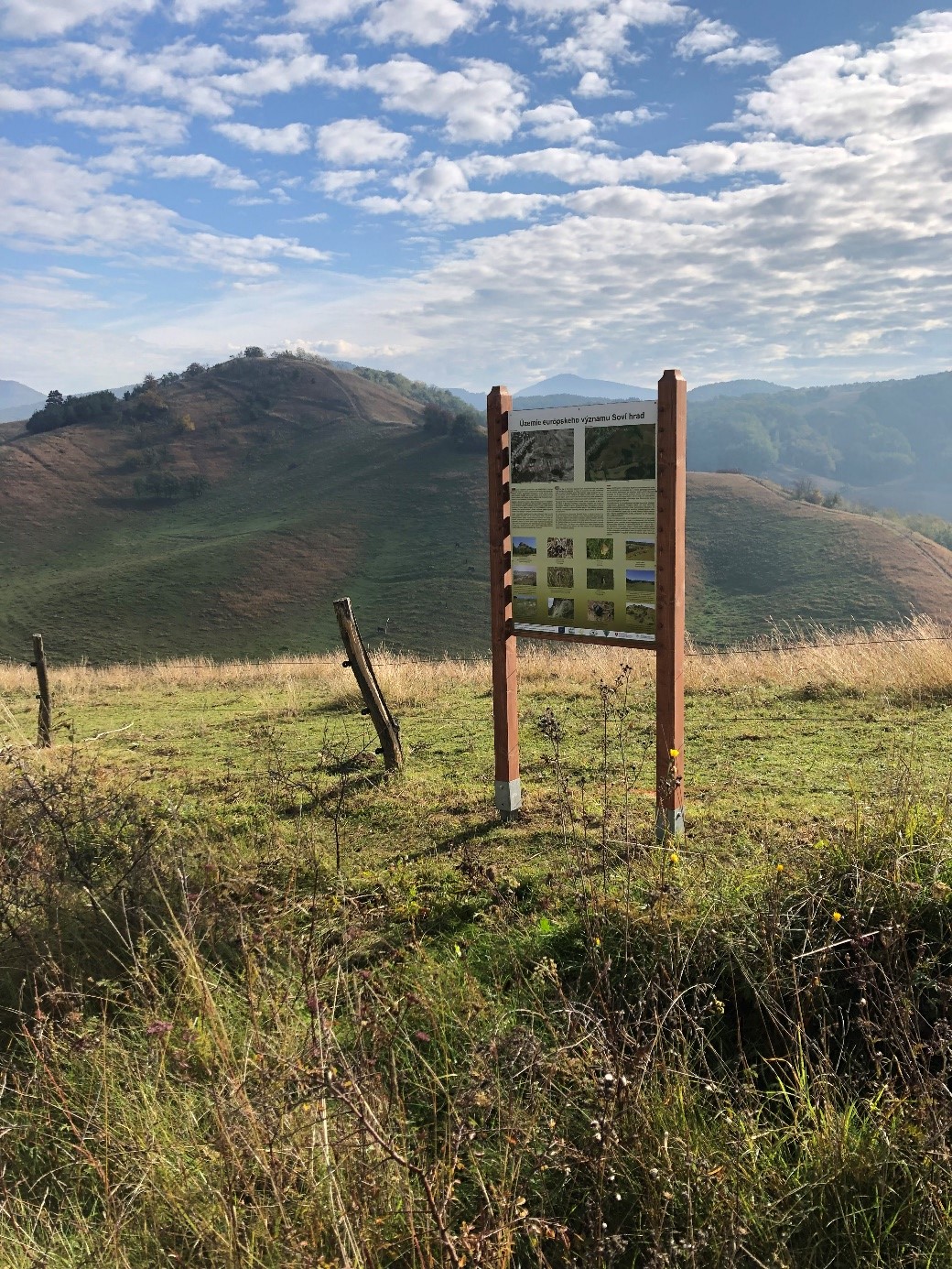
Placement of educational panels in Cerová vrchovina
The most of activities, what we are engaged in are predominantly aimed to grazing restoration that provides the favourable conservation status of dry and thermophilic habitats. An essential part of project is also propagation of natural values.

We restore grazing on Fabiánka
In Slovak Karst National Park is located the unique Site of Community Importance Fabiánka. It is a wonderful mosaic landscape with pastures and open forests, which had suffered by grazing abandonment. That led to loss of protected and rare species bounded to non-forest areas.

Serényi’s water tank restoration = grazing restoration
Thanks to the implementation of project actions of LIFE Sub-pannonic on Site of Community Importance Plešivská planina the project team persuaded the owner of the unique historical grazing infrastructure located on the site, the Serenyi water tank, to agree with the inclusion of the water tank in the list of National cultural monuments.
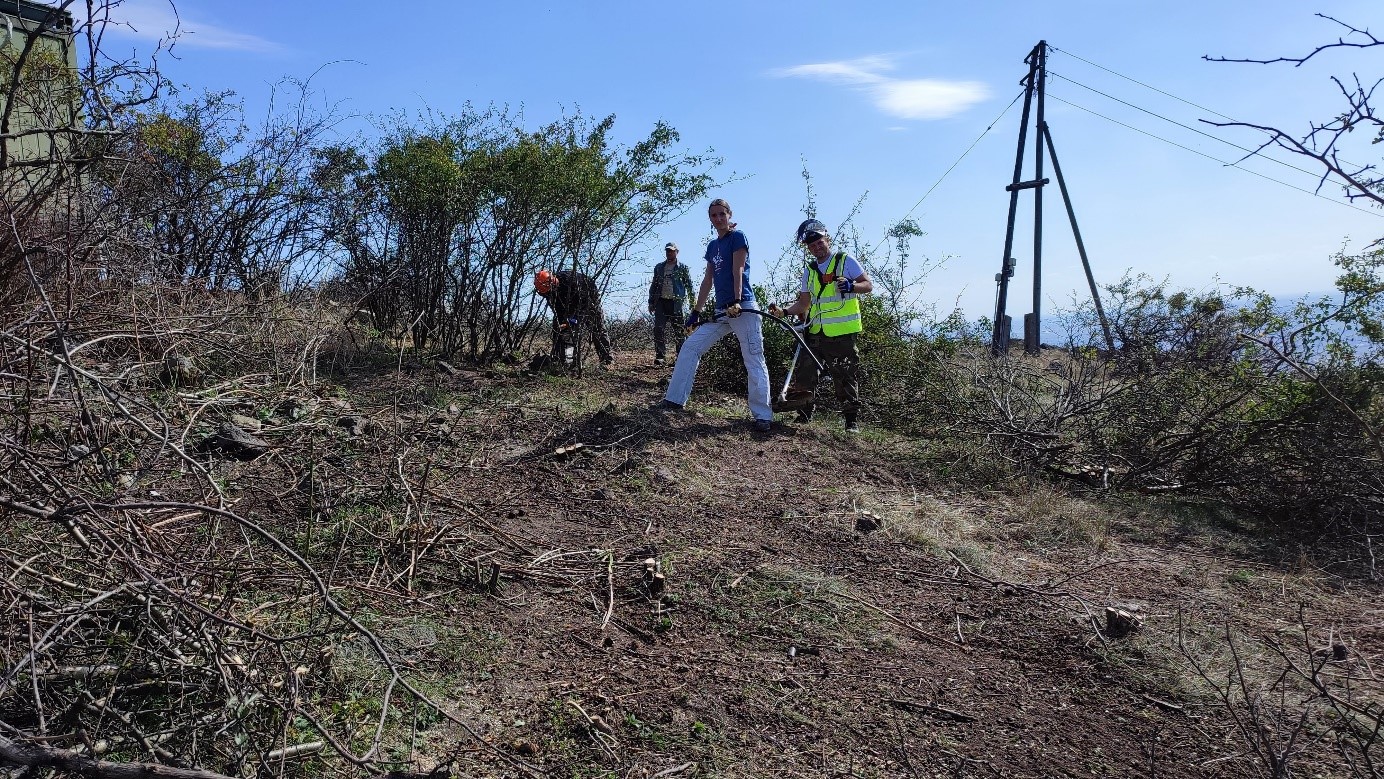
Volunteer’s action on Tarbucka 2.0
In the end of September, the dry-thermophilic pastures in south of Eastern Slovakia was visited again for a second time by volunteers. The Site of Community Importance Tarbucka was established for a purpose to protect and to improve favourable conservation status of species and habitats of European interest.
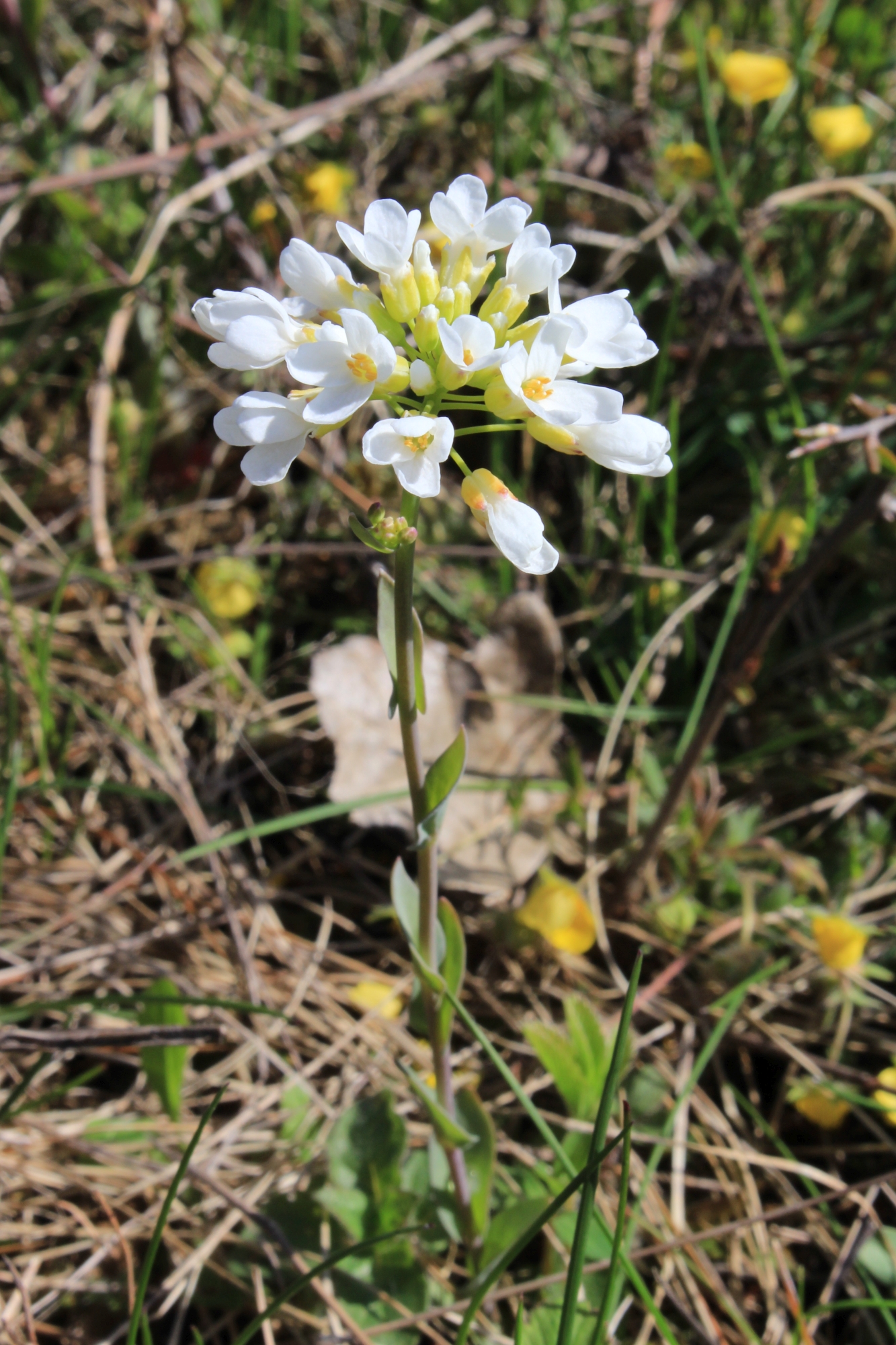
The Thlaspi jankae in record numbers – thanks to clearing of Jasovská planina
You can only find the rare plant of Thlaspi jankae, a protected species of European value, on Zobor mountain by Nitra, in the national park of Slovak Karst and in nearby karst areas of the Hungarian national park Aggtelek.

The results of grazing restoration on Zemné hradisko
In the area of Zemné hradisko, which is a part of Site of Community Importance Horný Vrch, we succeeded by conservation management. The Russian bugloss (Echium russicum) is in our country as well as in the European Union the protected plant species – the species of European interest.

Goats grazing on Velky Kopec helped the return of a rare orchid
And at this time of the year the effort of the brave farmers and volunteers from the whole of Slovakia brought a reward – thanks to their help with protecting nature a rare orchid - Green winged orchid (Orchis morio) – is blooming on “Velky Kopec”.

The act, when humans displaced the native animals from landscape had fatal consequences to biodiversity
Long time ago the open woodlands of Pannonian area had been grazed by big herbivores – humped cattle and European buffaloes. After human colonisation they were replaced by farm animals. In 50’s of 20th century the socialistic agriculture moved farm animals from landscape to stables.
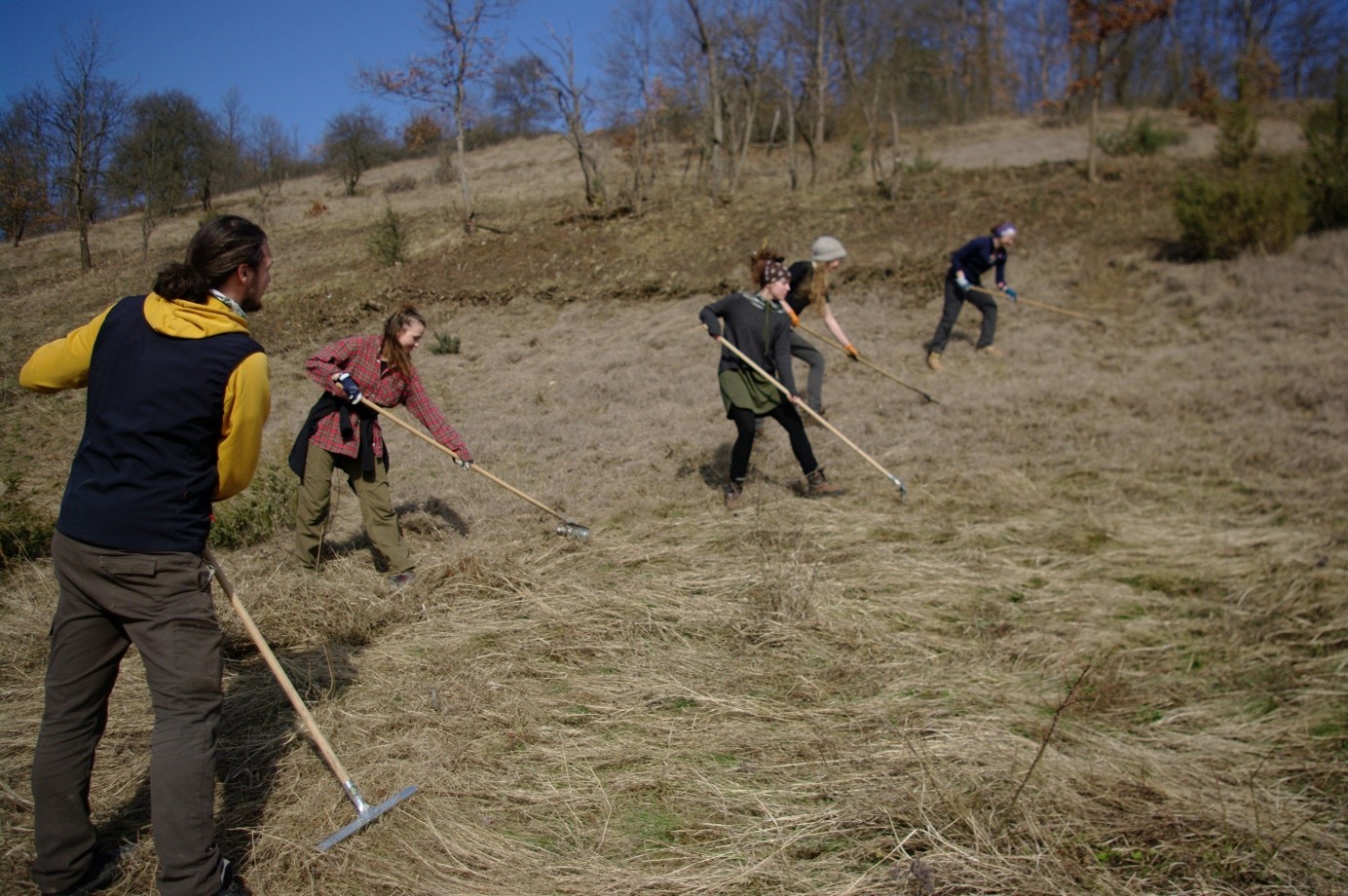
Early spring conservation management in Drieňové
At the end of February, we helped nature in Protected Landscape Area Cerová vrchovina. We met with employees of the Administration of Protected Landscape Area Cerová Vrchovina, local rangers and volunteers.
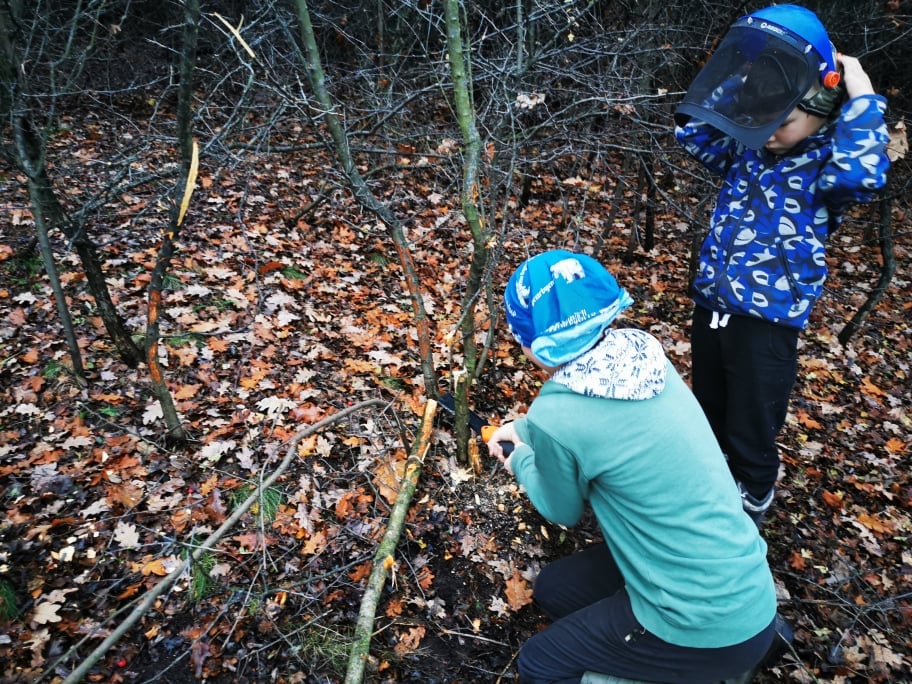
We also carried out volunteer work on the Veľký kopec next to Kráľovský Chlmec
For the second weekend, the geocachers from OZ Permoníci did not resist the spell of volunteering in Tokaj area. In this time at the SCI Veľký Kopec. We manually cleaned pastures densely overgrown with invasive agate and expansive woody plants. Of course, in compliance with all regulations.

Declaring Serényi Cistern as National Cultural Heritage helps revive pastures in Plešivská planina
Serényi´s cistern on the Plešivská Planina in the Slovak Karst was built in 1913 to ensure water for grazing animals and improve grazing conditions on the plain. Today, there is a lack of water for animals, because the cistern is not functional and unfortunately it no longer fulfils its role.

The restoration of the hill Tarbucka proceeds also thanks to volunteers of OZ Permoníci
In September, Tarbucka hill shook under hooves of grazing goats and also the feet of volunteers. Volunteers and geocachers from OZ Permoníci helped us clean these rare places from aerial trees and invasive plants.
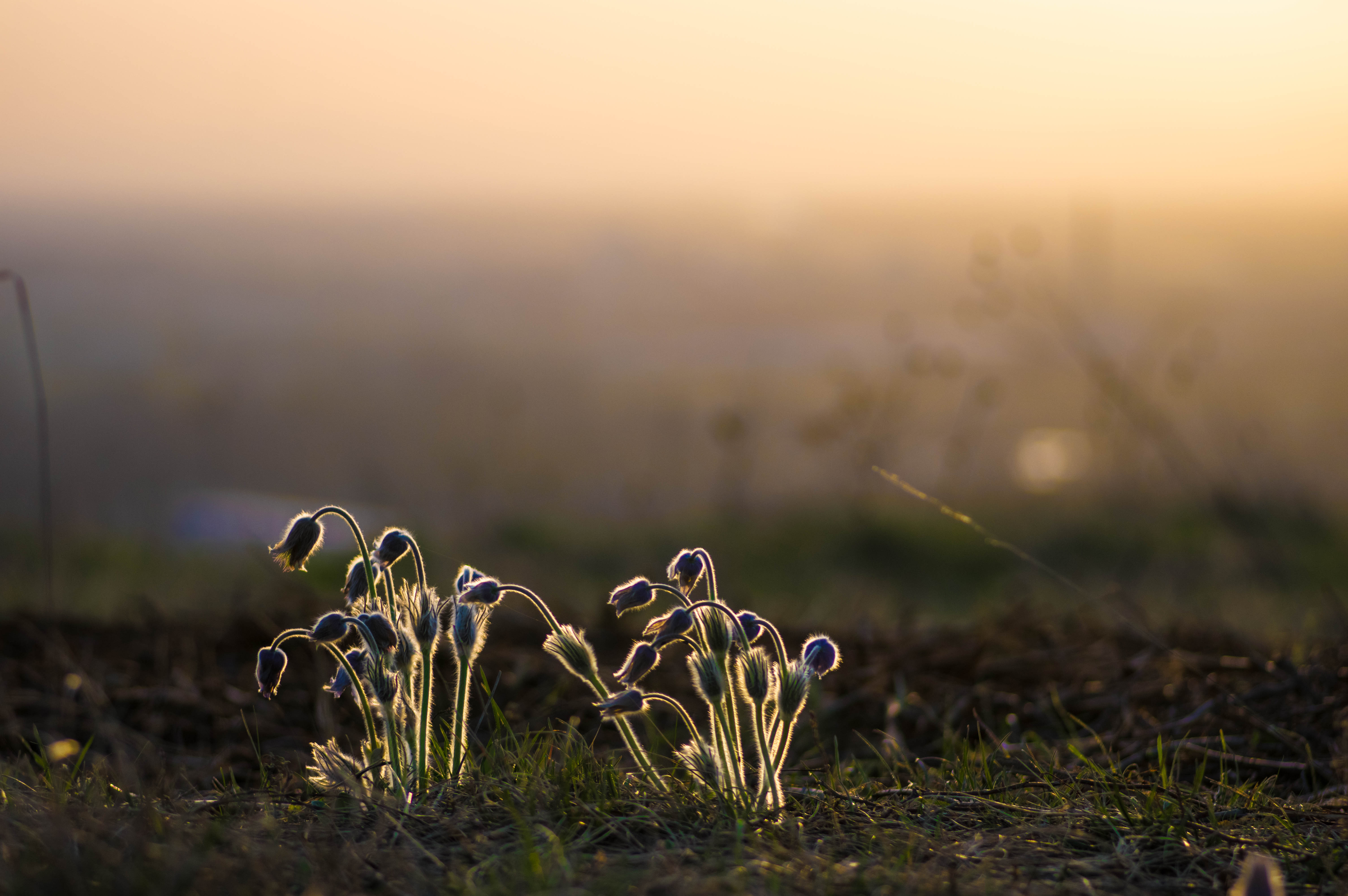
Restoration of management and grazing at the Sedliská in Hlohovec
About a year ago, we started renewal activities in the area of European importance Sedliská pri Hlohovci. The southern part of this area consists of beautiful xerothermic meadows with pulsatilla and adonis, which were used as pastures in the past.

Restoration of rare Tarbucka habitats
Tarbucka hill stretches over the villages Streda nad Bodrogom, Veľký Kamenec and Malý Kamenec. Thanks to its specific subsoil and suitable microclimatic conditions, Tarbucka hosts rare drought and thermophilic herbaceous vegetation and provides a home for many protected species of plants and animals. Thanks to these natural values it has been declared a Territory of European Importance.

Restoration of pastures on Zádielská plain
The species richness of our country is linked to non-forest habitats – they include thermophilic and xerophilous meadows and pastures, which we can admire in Slovenský Kras. These habitats depend on traditional management – extensive grazing and mowing. Unfortunately, most cities have not been farming traditionally for over 30 years. As a result, pastures are overgrown with aerial trees and expansive grasses.
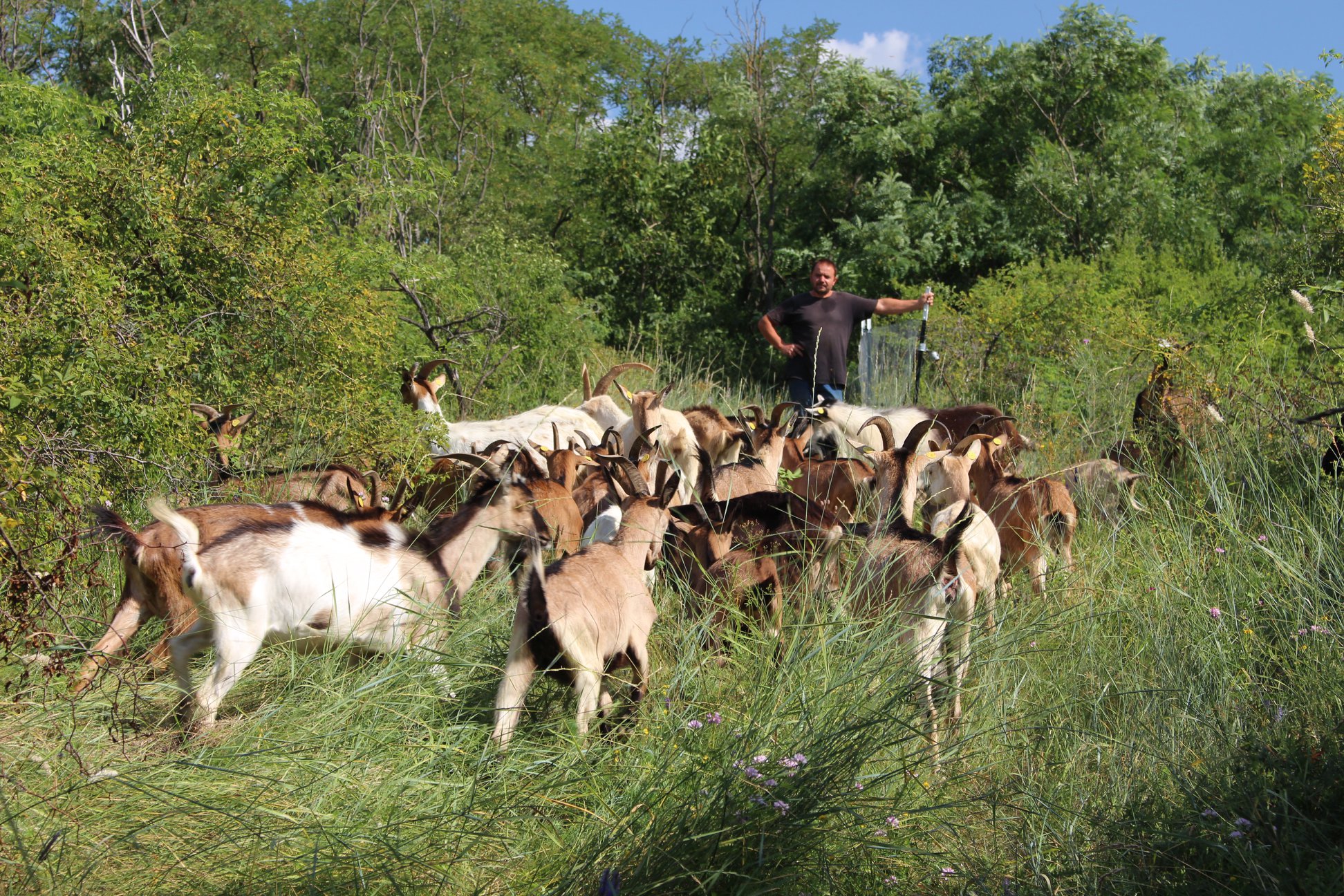
Restoration of grazing at Veľký Kopec
Together we a local stakeholder Arnold Docs we started grazing at SCI Veľký Kopec in eastern Slovakia. The grazing will help restore rare steppe habitats including oak pastures which are full of life especially the insect and floral type.

Restoration of pastures at Silicka planina
It is the first year of project running and we already succeeded in restoring the rare dry grassland habitats. One of the first project localitites which was restored through grazing in Fabiánka, part of the biggest karst plain in Slovakia – the Silicka plain.
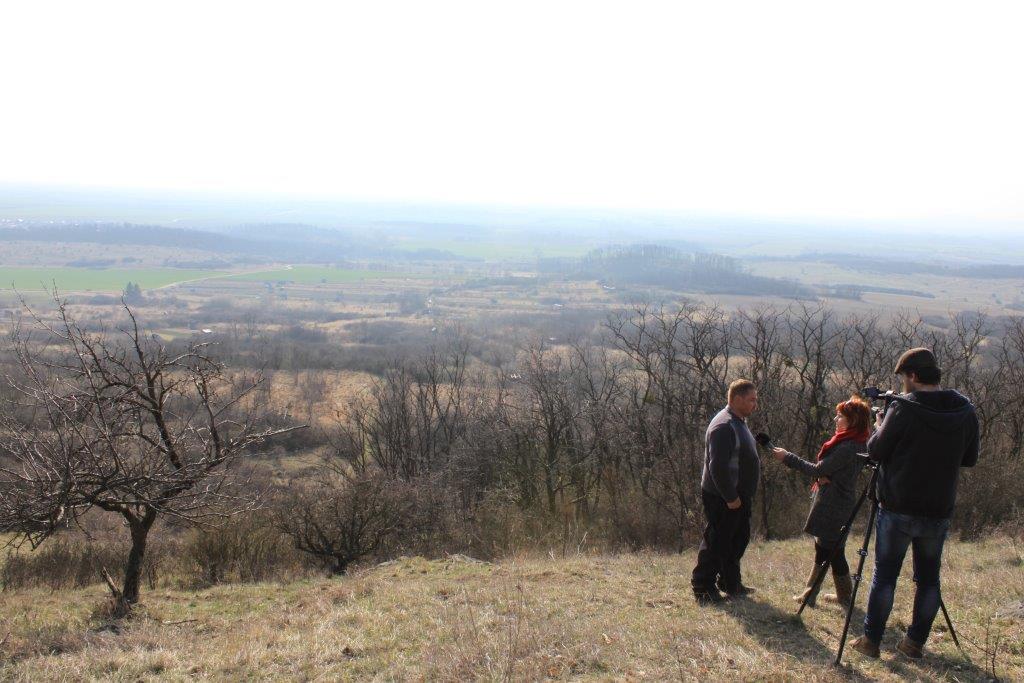
TV reportage about grazing at Kráľovský Chlmec
We restore rare grassland habitats in eastern Slovakia at lower Zemplín area. Watch the short news story on TV MA7 about the restoration of Veľký Kopec.
Project name: Conservation of subpannonic dry grassland habitats and species
Project acronym: LIFE SUB-PANNONIC
Project scheme: LIFE, Nature and Biodiversity
The project is implemented in Slovakia and Czech Republic.
Main objective: The main objective of the project is to improve the conservation status of 3 priority habitats of European importance and 3 species of European importance (of which 2 are priority) in 22 localities of the NATURA 2000 network in Slovakia and in 7 localities in the territory of Moravia (Czech Republic). At current state, the project sites are threatened by an overgrowth of aerial trees and expansive grasses and the spread of non-native species due to the abandonment of traditional management. Populations of target species are small and fragmented.
With appropriate management measures, the project will significantly contribute to the construction of the NATURA 2000 network in Slovakia, to the improvement of its functionality and the preservation of the natural heritage of the regions of Slovakia. In addition to improving the condition of the habitats in question, the aim of the project is to ensure sustainable care for the restored areas and to restore ecosystem services. A substantial part of the project activities will be implemented in cooperation with local farmers and communities, which will bring significant socio-economic benefits and contribute to job creation in the regions.
Specific Targets:
1. For *Onosma tornensis, it will cover all sites of its occurence in Slovakia within the NATURA 2000 network, representing cca 50% of the total SK/HU population of this endemic species.
2. For endemic species *Artemisia pancicii, 1 of cca 10 remaining sites worldwide will be covered.
3. Himantoglossum caprinum – the species will be conserved on northernmost edge of its overall distribution range. The respective populations are very endangered presently, with only a few indivduals left. The covered sites hold more than 80% of the overall SR population of this rare species.
4. *6240 – the project will cover and restore the core of habitats occurence in Slovakia and one of the most important sites in CR.
5. *6250 – some of the most important sites with this habitat type in Czech Republic will be restored.
If you are interested in similar activities in your area or if you need advice on the topics covered in the project, do not hesitate to contact us:
for Slovakia:
Katarína Mikulová, mikulova@broz.sk, +421 948 408 042
Ivana Czocherová, czocherova@broz.sk, +421 904 817 534
for the Czech Republic:
Vilém Jurek, vilem.j@gmail.com, +420 605 526 958
Ondřej Bukovsky, bukovsky.ondra@gmail.com
In the project, we pay special attention to the following topics:
- Restoration of long abandoned and overgrown pastures (reintroduction of grazing to long abandoned grasslands)
- The use of antiparasitics (drugs to protect livestock from parasites) harmless to beneficial insect species (e.g. dung beetles)
- Nature-friendly and effective management of invasive species
- Optimal management of project species * Onosma tornensis, * Artemisia pancicii and Himantoglossum caprinum (and other grassland species)

Himantoglossum caprinum

Onosma tornensis

Artemisia pancicii
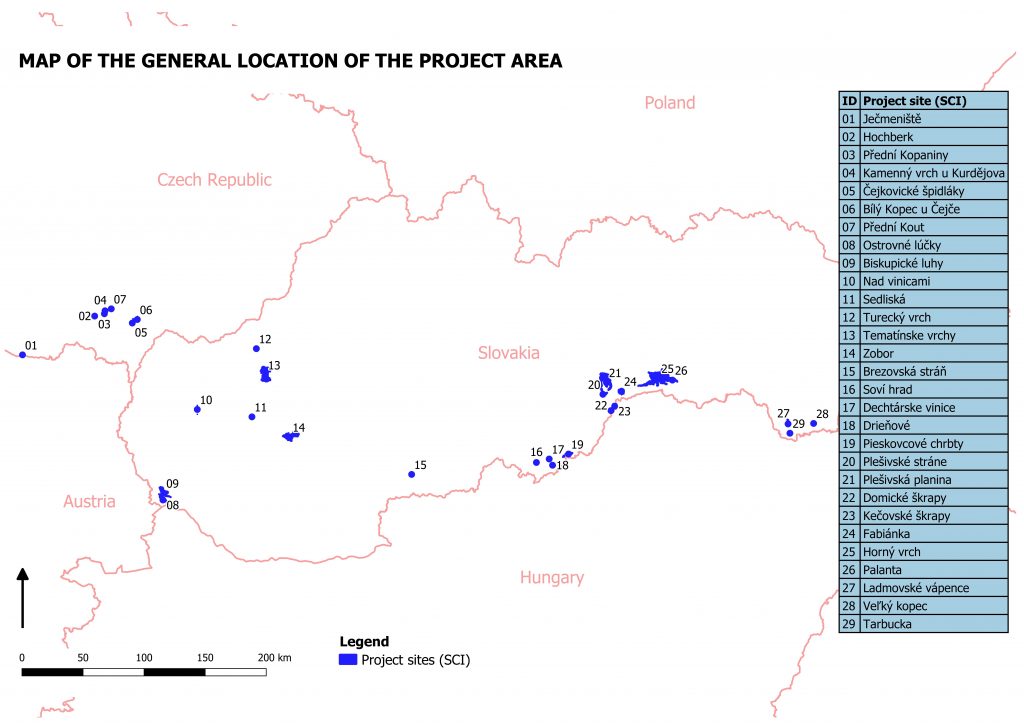
LIST OF ALL PROPOSED ACTIONS
A. Preparatory actions, elaboration of management plans and/or of action plans
A1 Expert study on restoration management of grassland habitats
A2 Expert study on restoration of target habitats by reintroduction of grazing
A3 Expet study on optimal management of target species
B. Purchase/lease of land and/or compensation payments for use rights
B1 Land purchase and long-term lease of land
C. Conservation actions
C1 Restoration management of grassland habitats
C2 Restoration of grassland habitats by reintroduction of grazing
C3 Specific restoration measures for target species
D. Monitoring of the impact of the project actions
D1 Monitoring of project impact on target species and habitats
D2 LIFE performance indicators monitoring
D3 Assessment of project impact on ecosystem services
D4 Assessment of projects socio-economic impacts and impact of dissemination actions
E. Public awareness and dissemination of results
E1 Awareness raising – public
E2 Awareness raising – key stakeholders
E3 Replication toolkit
E4 Increasing socio-economic benefits
E5 Networking and policies
F. Project management
F1 Project management and reporting
F2 Project bookkeeping, financial management and auditing
F3 After-LIFE plan
Status as of 31/1/2024
A. Preparation activities
A1 Expert study on restoration management of grassland habitats
A2 Expert study on restoration of target habitats by reintroduction of grazing
A3 Expert study on optimal management of target species
Expert studies are complete and help us to restore habitats and species populations. We thank the experts on target habitats and species for their enthusiasm in creating studies and for valuable advice in the field!
C. Concrete conservation actions
C1 Restoration management of grassland habitats
Currently, we have already restored around 348 ha of target habitats! They extend from Dolný Zemplín (SCI Ladmovské vápence near Ladmovce, SCI Veľký kopec nad Kráľovský Chlmec and SCI Tarbucka near Streda nad Bodrogom), through Slovak Karst (in SCI Plešivská planina, on Silická planina – SCI Fabiánka, in Nature Reserve Zemné hradisko and on the Zádielská and Jasovská plains – SCI Horný vrch), Cerová vrchovina (SCI Piskovcové chrbty near Drňa village, SCI Drieňové near Jestice village), Inovec foothills (SCI Tematínske vrchy), south of Považský Inovec (SCI Sedliská above Hlohovec city, the vicinity of Bratislava (SCIs Biskupické luhy and Ostrovné lúčky) to Moravia (SCIs Ječmeniště, Bílý kopec u Čejče, Čejkovické Špidláky, Hochberk, Kamenný vrch u Kurdějova, Hochberk, Přední Kopaniny and Přední kout). During the season when birds are nesting, we focus on a different type of activity – especially the removal of invasive species, which is most effective during this time. We have already managed to intervene against invasive plants on more than 131.3 ha in several project locations.
C2 Restoration of grassland habitats by reintroduction of grazing
In most localities, after applying C1 activities, it is necessary to introduce grazing immediately. Otherwise, the removed air raids would begin to rejuvenate. Cows, sheep, goats or donkeys cope very well with young sprouts. In this way, they help perfectly in habitats restoration. Therefore, we help farmers to adjust the pastures according to the needs of grazed animals (clean for more sensitive hooves of cows, fence as needed or provide shade and water for the comfort of our helpers). In the 2019 season, we started grazing on SCI Veľký Kopec above Kráľovský Chlmec and in several localities in Slovak Karst (on plains Silická, Plešivská, Jasovská and Zádielská as well as the NR Zemné hradisko). Since the spring of 2020, in cooperation with a local farmer, we have started to graze Tarbucka in lower Zemplín, which has been abandoned for many years. Further, thanks to the project, we are also started grazing the long time abandoned SCI Sedliská above Hlohovec. In the Czech Republic, it is also grazed in most locations after activity C.1, namely in SCIs Ječmeniště, Bílý kopec near Čejka, Čejkovické Špidláky, Hochberk, Kamenný vrch near Kurděj, Přední Kopaniny and Přední Kout.
In the 2021 season, we grazed more than 200 ha as part of the project. In the following season, in the year 2022, we managed to restore grazing on over 250 ha, while in the 2023 season, we grazed on 423 ha! This exceeded the expected results of the project.
C3 Specific restoration measures for target species
Based on the recommendation of an expert study, restoration measures for Himantoglossum caprinum have been implemented in the SCI Zobor and the SCI Nad Vinicami. For Artemisia pancicii, we are working on restoration efforts at the SCI Čejkovické špidláky. Additionally, active work is underway on restoration measures for Onosma tornensis in the SCI Horný vrch.
D. Monitoring of the impact of the project actions
Monitoring of the impact of the project actions on target species and habitats, ecosystem services or assessing socio-economic impacts is an essential part of the projects. Another monitoring season runs with the help of the best experts.
E. Public awareness and dissemination of results
Since the start of the project, several media outputs have been published. One of them is the report in regional television MA7, where the reporters came to see how the restoration of grazing above Kráľovský Chlmec is planned. And here is another one, from the period when grazing started. The project and its activities were also mentioned in the V4 news of television M1, on radio Slovenský rozhlas, on TV Slovenská televízia, in daily journal Új szó or on portal bumm.sk, enviroportal.sk, dobrenoviny.sk, čas.sk, teraz.sk, sme.sk, obecne-noviny.sk, on web page Ministry of the Environment (SR) and several others.
Grazing on Tarbucka, for example, delighted readers of Korzár and Nový Čas.
Moreover, you can hear about the pasture with our Katka Mikulová on Denník N. In addition, we talked about grazing in the section Čierna labuť_FM in :Popo_FM on FM radio and Pravda Journal (https://zurnal.pravda.sk/reportaz/clanok/666119-slony-do-europy-mamuty-na-sibir-a-ovce-do-lesov/).
As part of the project, we installed several educational panels (in Cerova vrchovina, SCIs Tarbucka and Veľký Kopec, where we placed also a bench). You can look forward to more educational panels installed at the project sites already this year!
We are still dedicated to excursions for the public. We have connected many with volunteer activities, where volunteers help us and local farmers to clean pastures.
One of the most important parts of the project is raising the awareness of stakeholders. We do this practically on a daily basis when we meet with local farmers, breeders, representatives of urban districts, land communities or local governments.
We try to move the best practice of the project further and help with replication and transfer to political documents. In this way, we have already managed to participate in the novelisation of Nature and Landscape Protection law. As part of the creation of a new agricultural policy, we are pushing for subsidies to farmers to be better redistributed and to support the long-term nature-friendly management of grassland-herbaceous habitats. We are glad that the project activities are helping our farmers, and thanks to this good cooperation, the Natura 2000 has also been expanded. We are also successful in finding solutions for nature-friendly and effective management of invasive species.
Mgr. Ivana Czocherová, Ph.D –project manager
Mgr. Katarína Mikulová, PhD. – assistant
Mgr. Sabína Ondirková – assistant
Mgr. Zuzana Zverková – finance manager
Mgr. Jakub Melicher – site manager
Mgr. Filip Rovný – site manager
Peter Lipovský – site manager
Mgr. Karolína Gelatičová – field worker

ŠOP SR:
Ing. Peter Oravec – specialist, LIFE ecologist
Administration of CHKO Cerová vrchovina
Ing. Drahoš Stano – fieldwork coordinator
We thank the administration of NP Slovenský Kras, CHKO Latorica, CHKO Cerová vrchovina, CHKO Ponitrie, CHKO Biele Karpaty, CHKO Malé Karpaty, CHKO Dunajské luhy.

ČSOPK ONYX:
Ing. Vilém Jurek – coordinator for localities in Moravia
Ondřej Bukovský – field worker
We thank AOPK – CHKO Pálava and the South Moravian Region for their help in restoring Moravian localities.
Local farmers help us with the restoration of specific locations. We owe the restoration and care of the site to:
ÚEV Veľký Kopec: Arnold Dócs with family
ÚEV Tarbucka: Juraj Kulčár and his son Dani
ÚEV Ladmovské vápence: Maroš Nemčík a Natália Zavidná with their families
ÚEV Horný vrch – Jasovská planina: Urbariát Háj and Agrodružstvo Turňa
ÚEV Horný vrch – Zemné hradisko: Urbariát Dvorníky and Agrodružstvo Turňa
ÚEV Horný vrch – Zádielská planina, section Hačavské lúky: Július Hodermarský with family
ÚEV Fabiánka: Družstvo Silická planina
ÚEV Plešivská planina: Ján Belák with family; Vojtech and Gabriel Szendi with family
ÚEV Kečovské škrapy: OZ Pre našu budúcnosť-Kečovo
ÚEV Dechtárske vinice: Štefan Csank with family
ÚEV Drieňové: Július Zagyi with family
ÚEV Pieskovcové chrbty – Drňa: Csaba Balint with family
ÚEV Pieskovcové chrbty – Chrámec: Agrodružstvo Rimavská Seč
ÚEV Sedliská: Roman Halás with family
ÚEV Přední Kopaniny, Kamenný vrch u Kurdějova, Přední kout: Miroslav Vodák with family
ÚEV Ječmeniště: Tomáš Coufalwith family

The purpose of the website www.krajinaziva.sk is to connect nature-friendly farmers with their customers. Agricultural landscape – our fields and pastures make up 51% of Slovakia’s area. Therefore, we care greatly about the way of farming and managing the land. It is essential for us to maintain the health of the soil and nature for future generations and to produce quality and healthy food with respect for nature.
In our opinion, little attention is given to nature-friendly farming and its benefits for the land. In addition, many honest farmers face a number of systemic and bureaucratic obstacles, which in many cases limit their agricultural activity. Our goal is to help change this situation and raise awareness of those farms who see the condition of the land as one of its key priorities.
As part of the LIFE Subpannonic project, two educational online trails have been created in the vicinity of several South Moravian sites of European importance – Bílý kopec, Špidláky, Přední kopaniny, Přední kout and Kamenný vrch u Kurdějova.
You can find more about online sidewalks on the website of the ČSOP Onyx project partner.

